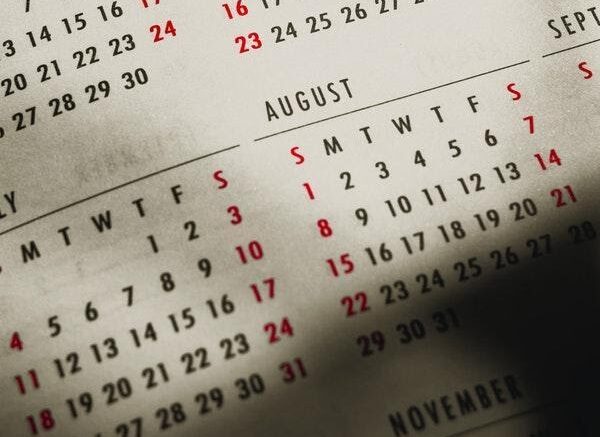Patient scheduling takes a sophisticated system and team finesse. The idea behind the methodology is to ensure the most significant patient revenue for the business to establish the optimum success of the practice while ensuring there is not a substantial wait in the lobby to encourage patient satisfaction.
That means creating a suitable balance between these components, one in stark opposition to the other. Go here for guidance on updating this experience.
The process might seem straightforward, but it can become complex when the day-to-day cancellations, add-ons, and no-shows take their toll on what was an impeccably laid out schedule. Efficiency impacts the practice in numerous ways, from delivering care to consistent profits.
No one can control the missed appointments or those who run late for reasons they cannot control, but there are things a clinic can do to maximize the schedule’s fluidity or potentially recover those moments that get lost to pull the day back on track.
Once an office can master these skills, there will be less stress for the staff, and the patients will experience fewer wait times.
Tips For Improving Patient Scheduling
As a team, improvements in patient scheduling mean increasing the daily workload, raising productivity without affecting morale, and generating greater profits. On the other hand, each patient needs to feel they are receiving individualized care and adequate attention during their scheduled treatment time.
The balance is doable but not without its share of difficulties. These challenges come when cancellations, missed appointments without a phone call, or patients running late to their visit regularly occur.
While the staff has little control over the circumstance of each day, there are steps you can take to schedule more effectively and efficiently, so the impact of these lost moments is not so significant.
Once there are improvements in the system, the team will experience much less stress due to playing catch up with the schedule. Plus, patients will not have to suffer the consequences of other patients creating scheduling conflicts by sitting in the waiting room for extended periods.
Nor will they receive less than average attention with their treatment on that particular day. Some tips to keep in mind as an office trying to develop a proper balance include:
Work from noon out when scheduling
An effective way to work a schedule is to start at noon for both morning and afternoon appointments working backward to the top in the a.m. and from noon to the bottom in the p.m.
The bulk of the day will be situated in the mid-morning to mid-afternoon range, so you can use the slots in the earlier morning and later afternoon more efficiently.
There will be time for days to go longer, so patients get adequate treatment if others disrupt the schedule, plus office meetings can be held outside of the patient-heavy time of the day.
You can also reduce overhead by allowing the team to leave early on lighter days or come in late. When there are scattered empty slots throughout the day, these create downtime where staff is left unproductive.
Implementing a strategy like this through a scheduling software program or simply incorporating the practice with your patient scheduling system can eliminate waste.

Consider self-scheduling
The suggestion is that it can take nearly ten minutes from when a patient calls into an office to make an appointment until the call ends. If you factor in the number of people who call in one day, there are likely hours spent on the phone every day simply setting up the day’s plan.
Generally, one person is designated as the “scheduler” for each practice. While a valuable team member, this employee is usually among the least paid. In a smaller office, the front desk personnel usually carry this load. But now, there have been innovations in technology with the potential for reducing the expense altogether and using the time typically spent on this activity in another more critical aspect of the office.
Claims indicate patients prefer scheduling their own online appointments, with a significant percentage scheduled in the empty slots for the same day or the following day. Many practices are now offering clients real-time scheduling options via the internet, a great deal more convenient for the patient and the practice.
Learn how to prioritize visits
A visit will vary depending on the time needed for treatment and the type of care required. That needs taking into consideration when scheduling. Some clients might not even need to be on the books with problems the doctor or a nurse can resolve via an email or even a phone call.
The individual staffing the phone will need to assess the calls to determine whether someone can benefit from a phone consultation or if they will need to be seen.
With these conveniences, clients who require a greater level of care can access same-day appointments much more readily. Plus, the profitability increases since the office will then be able to work with clients carrying more complex cases.
Email and text confirmation of appointments
Appointment reminder software can help to reduce missed or late appointments. A missed appointment or “no-show, no-call” is an expensive loss and a massive inconvenience, particularly when the practice is hectic and carries an extensive waitlist. Not only does the provider lose when someone does not come in, but a client also loses the opportunity to be seen.
With this software, a patient can receive a reminder and request to confirm or cancel the appointment. Then other people will be able to take advantage of the slot.
Create a waiting list for patients
Cancellations can come in at the very last minute. It can prove frustrating and inconvenient, but that is a good reason to create a waiting list for patients who want and need to be seen and are willing to come at a moment’s notice. With the right software option, you can develop a quick list that is ready and within reach to send out a mass alert letting those waiting know of the last-minute opening.
With this method, patients will reach out to you instead of making a million calls to find someone who can get there in time. That can be very time-intensive and might end up missing the opening. When you get the appointment scheduled, you can reach out again to let those waiting know it has been filed. It saves much time and effort having to be on the phone, allowing you to let everyone know at one time.
Recall and re-care automated option
Patients do not always follow through with their re-care appointments. An automated recall system ensures patients are reminded of their care appointments, meaning the practice schedule remains full consistently.

More clients who have failed to follow up with re-care over an extended period, even as long as years, can receive an email reminder, voice message, or a text reminder advising them that it’s time to schedule their regular care appointment.
If nothing else, the client will call the office with confusion over what they are supposed to schedule for. It can be explained and then set up.
Automated responses to routine inquiries
Every patient inquiry should be addressed with an initial call without delay. The team can answer common and straightforward questions with an advanced scheduled system without distracting from daily office functions. These provide automated responses to routine requests like appointment cancellations, reschedules, or confirmations.
Making sure these include a detailed reply to most of your patient’s essential questions will help each client receive that immediate response they’re looking for and satisfy them until they can see someone or receive a callback.
Practices can receive an overwhelming volume of calls on a given day, often disrupting patient care. An adequate system should provide key information and guide clients to the appropriate answers without reaching out to staff until there’s a care need.
Final Thought
It takes an efficient team working together to accomplish a busy day’s patient schedule considering the unexpected disruptions that can potentially occur. These can include missed appointments, late patients, or emergency add-ons to the schedule.
One or more of these are likely each day, creating delays in the schedule and wait times for other clients. With an adequate system and following some of these steps, maneuvering these challenges is possible with patient satisfaction intact as well as solid practice profits.
Those are the primary priorities when working in this type of setting. Regardless of the inconveniences a practice faces, the patient should always feel they’re receiving the care they deserve despite office delays, especially if they’ve endured substantial waiting to receive it.
Cutting corners or rushing patients through their treatments to catch up with a schedule is the best way to leave people dissatisfied and turning to other practices, severely cutting into business profits.
Scheduling might seem like it’s the most straightforward and most uncomplicated component of the practice, but it is, in fact, the element that can have the most significant impact.
